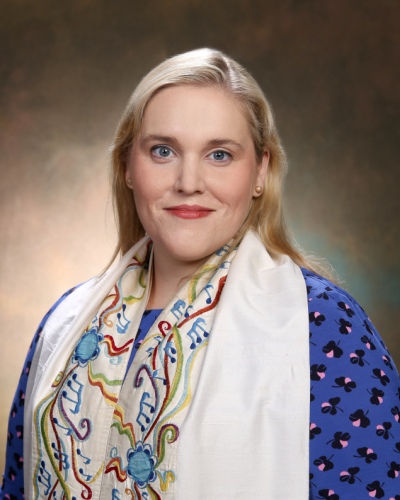Like many in the early 90s, I learned the section of Torah that I read at my Bat Mitzvah from a tape that my childhood rabbi recorded for me. I remember carefully rewinding the tape with a pencil when the ribbon got a little out of whack and hoping that it would still work. How on earth else would I learn my Torah portion? At age 12, I was no Hebrew scholar, though I think I was perfectly adequate for a bat mitzvah student. I needed that recording if I was going to succeed.
When I was 22, I actually learned to chant from the Torah from Cantor Bernard before I ever attended seminary at the Hebrew Union College-Jewish Institute of Religion, Debbie Friedman School of Sacred Music. I learned all the trope symbols and all the grammatical tricks and exceptions that you must know if you want to be an expert ba’alat korei – a Torah chanter.
During this time of diligent study, I learned one of the most exceptional sections in the Torah, Shirat Hayam – the Song of the Sea. Shirat Hayam are the words of rejoicing sung by the Children of Israel safely on the other side of the Sea of Reeds. The careful listener will hear selections from our prayer “Mi Chamocha” chanted during the reading: Who is like You? For me, as a learner delving in to this text in my early 20s, I was quick to realize that I had heard some of the other Hebrew words before as lyrics to the song, “When You Believe,” from the film Prince of Egypt. Shirat Hayam concludes with verses about Miriam the Prophetess taking up her timbrel and dancing in celebration.
Sometimes called simply, the Shir – the song, Shirat Hayam occurs during Parashat Beshallach, which is read on February 8th this year. This Shabbat is generally referred to as Shabbat Shirah – the Shabbat of Song. The Song of the Sea is unique in many ways. Visually, the text appears in the Torah staggered, like the bricks that the Israelites laid as slaves in Egypt, or perhaps as two walls of water, symbolizing the splitting of the Sea. Aurally, the Torah chanter will flip back and forth between the normal style of Torah trope and a special, inherited melody. Additionally, Biblical scholars believe that the Hebrew in Shirat Hayam is among the oldest in the whole Torah, suggesting that this moment of communal celebration is one of the most ancient threads that binds our people together. Reading Shirat Hayam on Shabbat Beshallach is a truly exceptional moment in the cycle of the Jewish year.
In some synagogues, it is customary to elevate the music on Shabbat Shirah as a celebration of the power of music in worship and connection to the Divine. At Temple Beth El, we will mark Shabbat Shirah on Friday, February 7th through one of our lively 6pm Family Shabbat Evening Services featuring our Shir Kids Youth Choir and, perhaps, a few other musical surprise guests. The 60-minute service will be reflective, joyful, and appropriate for all ages. The 6pm Family Shabbat Evening Service is preceded by our monthly Shabbat SongFest at 5:30pm, which is a Shabbat Sing-along for tots and preschoolers. We will further elevate and celebrate the season with a Congregational Shabbat Dinner for Tu Bishvat at 7:15pm. Please register on the TBE website. ***Please note, there will not be a 7:30pm service on February 7th.
The holiday festivities continue in March! Save the date for Temple Beth El’s Purim Shpiel on Sunday morning, March 9th at 11:00am. A Very Frozen Purim Shpiel will tell the tale of Esther, Mordechai, Haman, and the rest to beloved songs from both Frozen movies, interspersed with readings from the Megillah.
While the cold, wintry weather blows outside, let’s keep our spirits warm and lifted in song on Shabbat Shirah, Purim, and always.




